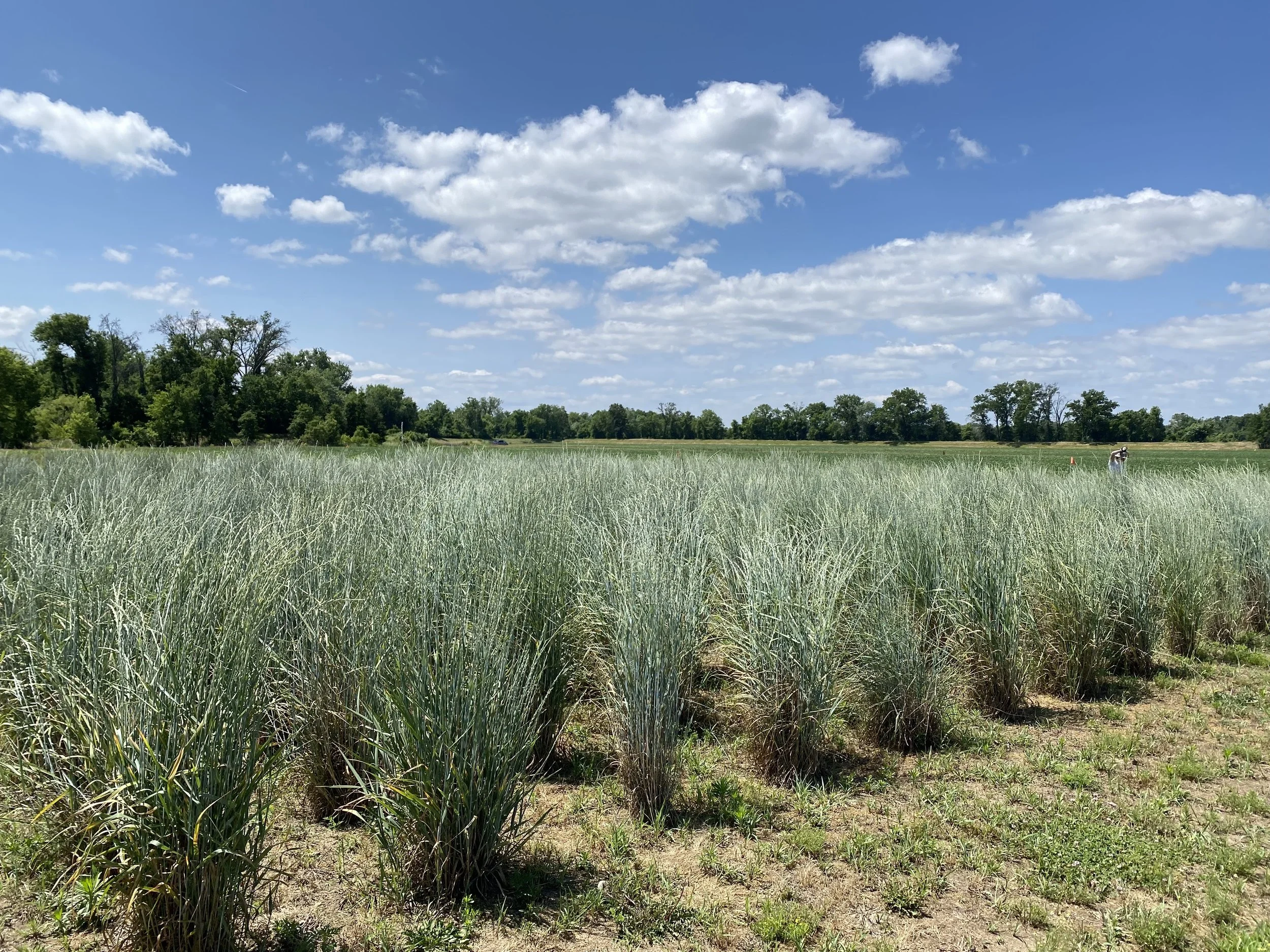Lab Focuses
-

Quantitative genetics at the intersection of ecology, evolution, and breeding
Much of the phenotypic variation segregating in populations is quantitative, and results from complex genetic architectures, environment, and genotype by environment interactions. The Rubin Lab takes a holistic approach to understand the genetic and abiotic environmental factors that influence trait expression, the developmental mechanisms that perceive and integrate these environmental signals at the whole organism level, and the amount of phenotypic variation and plasticity present for a given trait. Our research spans the continuum from basic to applied biology, using natural populations, experimental mapping populations, breeding populations, and mutant lines of both model and non-model species. By integrating quantitative genetics with ecological and evolutionary theory, we aim to understand how traits evolve in the natural and breeding populations.
-

Developing high-throughput phenotyping and phenomic selection models
A major focus of our lab is developing and evaluating high-throughput phenotyping platforms and statistical models to enable early-stage selection in perennial crops. We use spectral data collected from handheld sensors to build phenomic relationship matrices and prediction models for traits like disease resistance and yield. This work seeks to demonstrate the power of phenomic selection as an alternative to genomic selection in species where genomic resources are limited. By integrating seedling-stage spectral data with multi-year field trait measurements, we aim to reduce the time and cost associated with traditional breeding cycles and enable selection after just weeks of growth.
-

Environmental cues and life cycle transitions in plants
Our lab also investigates how plants perceive and respond to environmental signals—especially the role of cold cues on germination and flowering. Using natural and experimental populations of Arabidopsis thaliana, Brassica rapa and Mimulus guttatus, we are exploring how plant populations respond to cold at different life stages and how these responses may hedge against environmental variation and unpredictability. We are also characterizing the genetic and molecular mechanisms underlying cold-mediated responses using transcriptomics and genetic mapping.Previously we have studied circadian rhythms as integrators of environmental information, exploring how plasticity in circadian parameters affects developmental traits and fitness across diverse conditions. Together, these projects aim to reveal how the environment affects trait expression.
Publications
(Google scholar: https://scholar.google.com/citations?user=Yy5gIVMAAAAJ&hl=en)
Peer Reviewed Publications:
26. Rubin MJ◊, Risano AM◊*, Bergh E, Sandoval M, Selby S, Sherrod S, Ciotir C, Herron SA and Miller AJ. 2024. Evaluating trait variation and covariation in perennial, herbaceous crop candidate species using herbarium specimens. Brittonia 76: 269-280.
◊ co-first author
25. Karabulut E, Erkoç K, Acı M, Aydın M, Barriball S, Braley J, Cassetta E, Craine EB, Diaz-Garcia L, Hershberger J, Meyering B, Miller AJ, Rubin MJ, Tesdell O, Schlautman B and Şakiroğlu M. 2023. Sainfoin (Onobrychis spp.) crop ontology: supporting germplasm characterization and international research collaborations. Frontiers in Plant Science 14: 1177406.
24. Van Tassel DL, DeHaan LR, Diaz-Garcia L, Hershberger J, Rubin MJ, Schlautman B, Turner K and Miller AJ. 2022. Re-imagining crop domestication in the era of high throughput phenomics. Current Opinion in Plant Biology 65:102150.
23. Herron SA, Rubin MJ, Albrecht MA, Long QG, Sandoval MC and Miller AJ. 2021. The role of genus and life span in predicting seed and vegetative trait variation and correlation in Lathyrus, Phaseolus, and Vicia (Fabaceae). American Journal of Botany 108: 2388-2404.
22. Ta J, Palmer C, Brock MT, Rubin MJ, Weinig C, Maloof JN and Runcie D. 2020. Multiple loci control variation in plasticity to foliar shade throughout development in Arabidopsis thaliana. G3: Genes, Genomes, Genetics 10: 4103-4114.
21. Brock MT, Rubin MJ, DellaPenna D and Weinig C. 2020. A nested association mapping panel in Arabidopsis thaliana for mapping and characterizing genetic architecture. G3: Genes, Genomes, Genetics 10: 3701-3708.
20. Frawley ES, Micke B, Ciotir EC, Rubin MJ and Miller AJ. 2020. An ethnobotanical study of the genus Elymus. Economic Botany 74: 159-177.
19. Van Tassel DL, Tesdell O, Schlautman B, Rubin MJ, DeHaan LR, Crews TE and Streit Krug A. 2020. New food crop domestication in the age of gene editing: Genetic, agronomic, and cultural change remain co-evolutionarily entangled. Frontiers in Plant Science 11: 1-16.
18. Herron SA, Rubin MJ, Ciotir EC, Crews TE, Van Tassel DL and Miller AJ. 2020. Lifespan effects on seed traits, germination, and root:shoot growth in annual and perennial legume crops and their wild relatives. Frontiers in Plant Science 34: 1-14.
17. Rubin MJ, Brock MT, Davis SJ, and Weinig C. 2019. Joint genetic architecture of the circadian clock and plant architecture under field conditions. G3: Genes, Genomes, Genetics 9: 1131-1139.
16. Rubin MJ◊, Schmid K◊, and Friedman J. 2019. Assortative mating by flowering time and its effect on correlated traits in variable environments. Ecology and Evolution 9: 471-481.
◊ co-first authors
15. Friedman J, Middleton T and Rubin MJ. 2019. Environmental heterogeneity generates intra‐population variation in life‐history traits in an annual plant. New Phytologist 224: 1171-1183.
14. Baker RL, Leong WF, Brock MT, Rubin MJ, Welch S, Maloof JN and Weinig C. 2019. Transcriptomic network reconstruction and eQTL analyses reveal mechanistic connections between genomic architecture and Function-Valued Traits during Brassica rapa development. PLOS Genetics, 15: e1008367.
13. Schier HE, Eliot KA, Herron SA, Landfried L, Migicovsky Z, Rubin MJ and Miller AJ. 2019. Comparative analysis of perennial and annual Phaseolus seed nutrient concentrations. Sustainability 11:2787.
12. Yarkhunova Y, Guadagno CR, Rubin MJ, Davis SJ, Ewers BE and Weinig C. 2018. Circadian rhythms are associated with variation in photosystem II function and 2 photoprotective mechanisms. Plant, Cell and Environment 41: 2518-2529.
11. Rubin MJ, Brock MT, Baker RL, Wilcox S*, Anderson K*, Davis SJ and Weinig C. 2018. Circadian rhythms are associated with shoot architecture in natural settings. New Phytologist 219: 246-258.
10. Rubin MJ and Friedman J. 2018. The role of cold cues at different life stages on germination and flowering phenology. American Journal of Botany 105: 749-759.
* Featured in the monthly Highlights section (https://doi.org/10.1002/ajb2.1081)
9. Baker RL, Leong WF, An N, Brock MT, Rubin MJ, Welch SM and Weinig C. 2018. Bayesian estimation and use of high-throughput remote sensing indices for quantitative genetic analyses of leaf growth. Theoretical and Applied Genetics 131: 283-298.
8. Rubin MJ, Brock MT, Davis AM, German ZM, Knapp M, Welch SM, Harmer SL, Maloof JN, Davis SJ and Weinig C. 2017. Circadian rhythms vary over the growing season and correlate with fitness components. Molecular Ecology26: 5528-5540.
7. Brock MT, Winkelman RL, Rubin MJ, Edwards CE, Ewers BE and Weinig C. 2017. Allocation to male vs female floral function varies by currency and responds differentially to density and moisture stress. Heredity 119: 349-359.
6. Kerwin RE, Feusier J, Muok A, Lin C, Larson B, Copeland D, Corwin J, Rubin MJ, Francisco M, Li B, Joseph B, Weinig C and Kliebenstein DJ. 2017. Epistasis × environment interactions among Arabidopsis thalianaglucosinolate genes impact complex traits and fitness in the field. New Phytologist 215: 1249-1263.
5. Brock MT, Lucas LK, Anderson NA, Rubin MJ, Markelz RJC, Covington MF, Devisetty UK, Chapple C, Maloof JN and Weinig C. 2016. Genetic architecture, biochemical underpinnings, and ecological impact of floral UV patterning. Molecular Ecology 25: 1122-1140.
4. de Montigue A, Giakountis A, Rubin MJ, Toth R, Sokolova V, Cremer F, Porri A, Reymond M, Weinig C and Coupland G. 2015. Natural genetic variation confers precise diurnal patterns of GIGANTEA expression that influence plant growth. Proceedings of the National Academy of Sciences 112: 905-910.
3. Friedman J and Rubin MJ. 2015. All in good time: understanding annual and perennial strategies in plants. American Journal of Botany 102: 497-499.
2. Kerwin R, Feusier J, Corwin J, Rubin MJ, Lin C, Muok A, Larson B, Li1 B, Joseph B, Francisco M, Copeland D, Weinig C and Kliebenstein D. 2015. Natural genetic variation in Arabidopsis thaliana defense metabolism genes modulate field fitness. eLife 4: e05604.
1. Haselhorst MSH, Edwards CE, Rubin MJ and Weinig C. 2011. Genetic architecture of life-history traits and environment-specific tradeoffs. Molecular Ecology 20: 4042-4058.
Pre-Prints
3. Keaggy W◊, Harris ZN◊, Braley J, Cassetta E, Gutierrez J, Piotter E, Schuhl H, Crain JL, DeHaan LR, Turner K, Fahlgren N, Hershberger J, Schlautman B, Van Tassel DL, Rubin MJ, Miller AJ. Leveraging high-dimensional seed colorspace in phenomic selection models for herbaceous perennial crops. bioRxiv: https://doi.org/10.1101/2025.07.28.667321.
◊ co-first author
2. Harris ZN, Tran V*, Piotter E, Hanlon M, Rubin MJ, Miller AJ. A leaf phenomics approach to estimating below-ground traits in North American Licorice. bioRxiv: https://doi.org/10.1101/2025.04.07.647639.
1. Herron SA, Harris Z, Rubin MJ and Miller AJ. Comparative population genomics in two sympatric species of Strophostyles (Fabaceae) with contrasting life histories. bioRxiv: https://doi.org/10.1101/2021.06.08.447599.
Non-peer reviewed publications
Fitzpatrick CL, Alter SE, Boughman JW, Débarre F, Edmands S, Moehring A, Moyle L, Otto SP, Ronce O, Rubin MJ and Sweigart AL. 2021. The virus evolves: four public health priorities for reducing the evolutionary potential of SARS-CoV-2. BioScience 4: 319.
Funding
The research in the Rubin Lab is currently supported by The Foundation for Food and Agriculture Research (FFAR), American Genetics Association, Saint Louis University, and Taylor Geospatial Institute.



